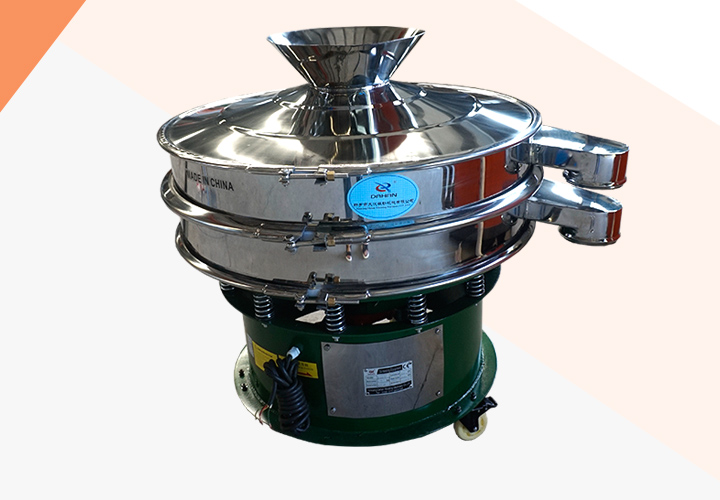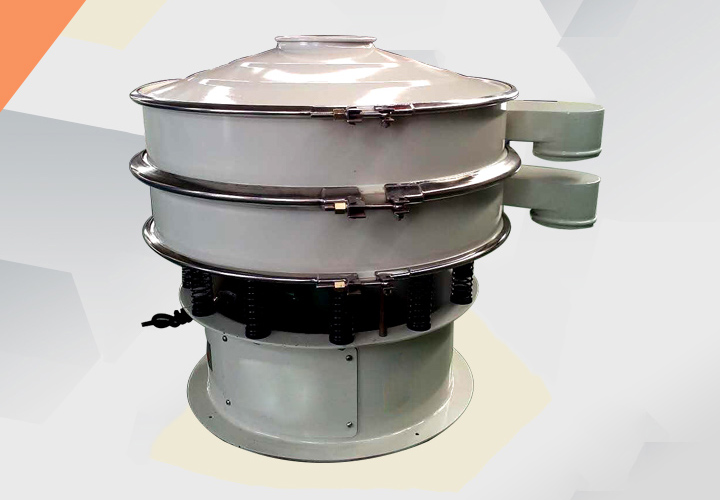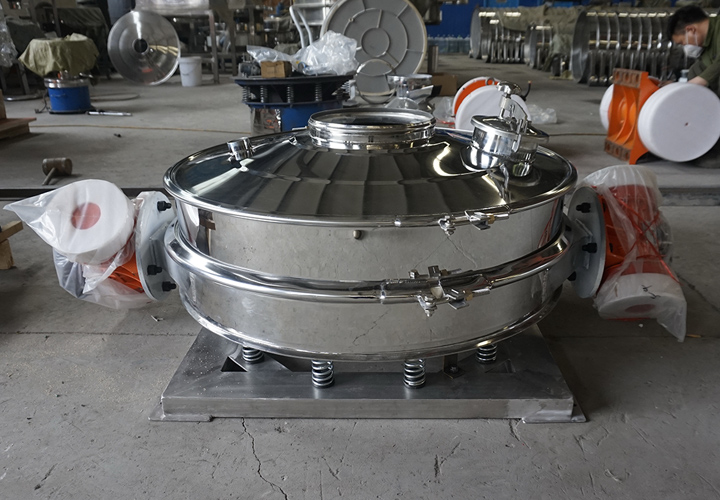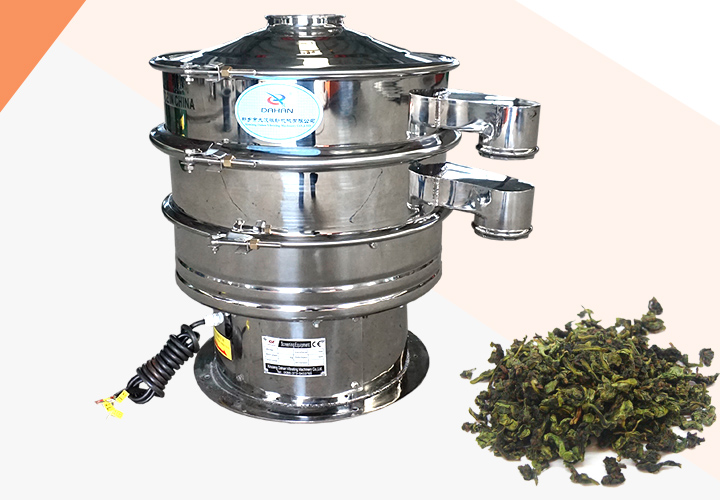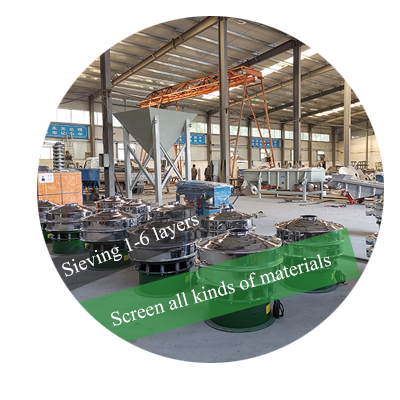Centrifugal Sifter For Green Tea Sieving
Centrifugal sifter for green tea sieving company has launched a new centrifugal sifter for green tea sieving , which aims to provide efficient and reliable screening solutions for the tea processing industry. The centrifugal sieve uses advanced technology and precision manufacturing processes to quickly and accurately separate green tea particles according to screening grades and mesh numbers, thereby improving production efficiency. In addition, our centrifugal sifter for green tea sieving is equipped with multi-layer screens (usually 3-5 layers) and adjustable mesh numbers (commonly 10-60 meshes) to meet the screening needs of different tea sizes and qualities. Whether you are engaged in green tea refining, black tea processing or other related industries, our products can provide you with high-quality screening effects, making your production more efficient and smoother.
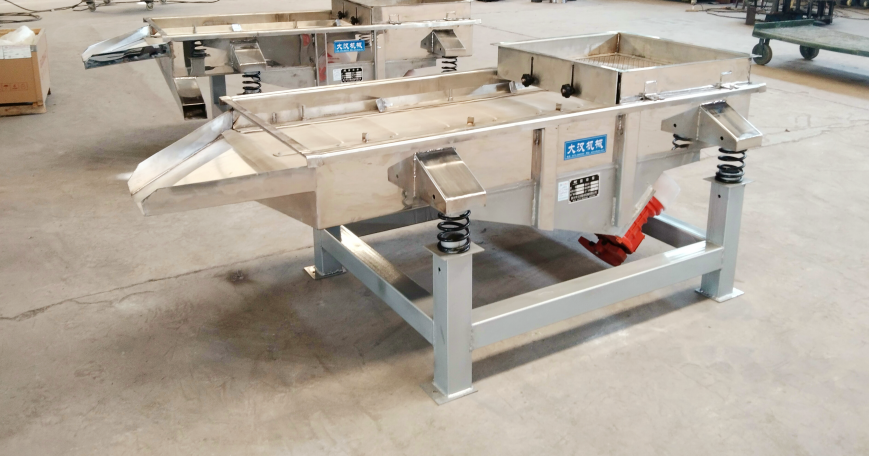
Green Tea Screening Centrifugal Screen Screening Process
Green Tea Screening Centrifugal Screen plays a key role in green tea processing, especially in the refining stage, for grading, removing impurities and improving tea quality.
Green tea processing from picking to refining usually includes the following steps: picking → killing → rolling → drying → refining (screening, impurity removal, grading). Screening is the core link in the refining stage, aiming to separate tea leaves of different sizes, shapes and qualities. The screening process generally includes:

Preliminary cleaning to remove non-tea impurities in tea leaves, such as branches, dust, etc.; disperse the tea leaves that have agglomerated after rolling for subsequent screening; grade the tea leaves by size and length (such as single buds, one bud and one leaf, broken pieces, etc.) through sieves of different mesh sizes; select and remove impurities to further remove fine impurities or smoky tea to improve sensory quality.
What are the advantages of green tea screening centrifugal screens?
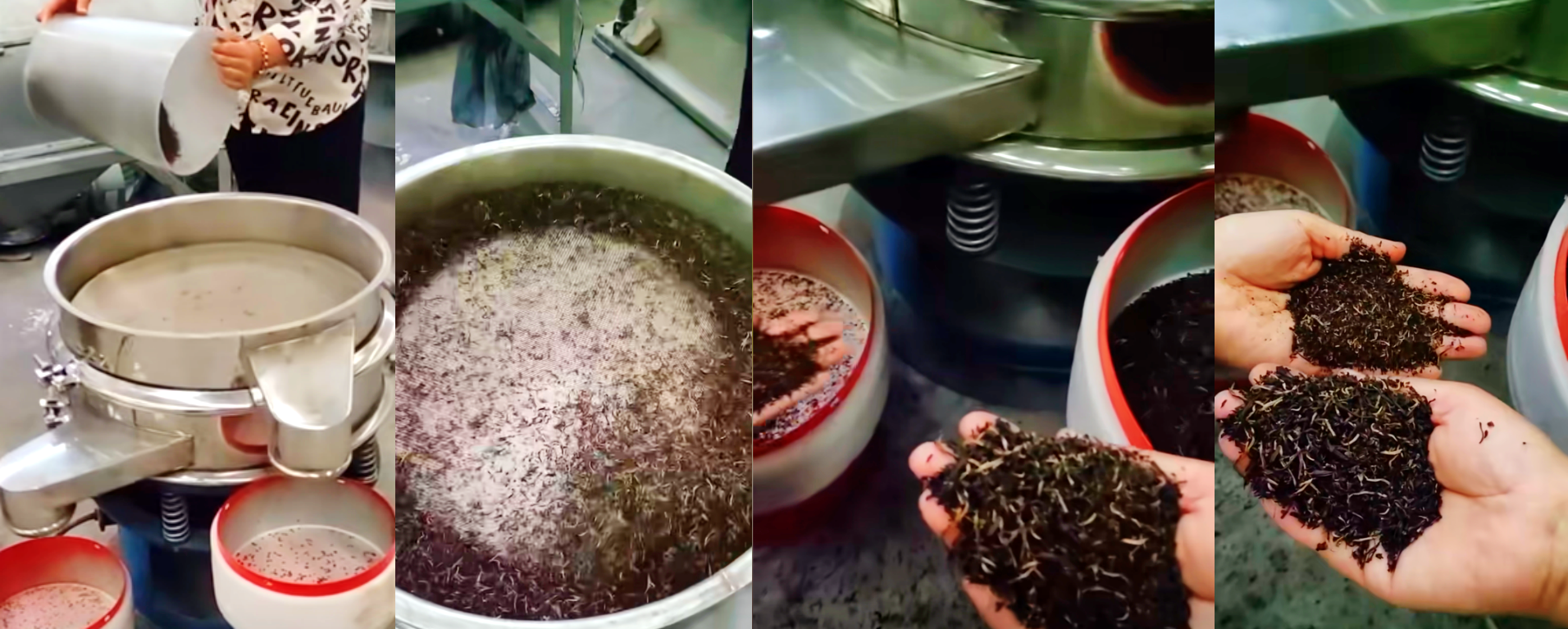
The centrifugal sifter for green tea sieving uses high-speed rotating centrifugal force (usually 300-600 rpm) and multi-layer screens (3-5 layers, 10-60 meshes) to quickly and accurately screen tea leaves according to their size and shape, such as separating single buds, one bud and one leaf, and broken pieces. At the same time, through fine grading, the same grade of tea leaves are more uniform in appearance and particle size, which improves the appearance and quality of the tea leaves, meets the market demand for green tea of different grades, and enhances the market competitiveness of the products.
The screening process of the centrifugal sifter for green tea sieving is relatively gentle, without violent vibration or slapping, which can effectively protect the strip structure of green tea and reduce the breakage of tea strips or the generation of powder. Compared with traditional manual screening or simple mechanical screening, the automated screening process of the centrifugal screen greatly shortens the screening time and can process a large amount of tea in a short time. Taking a medium-sized tea factory as an example, after the introduction of the green tea screening centrifugal screen, the daily tea screening processing capacity increased by 40%, effectively alleviating the pressure during the peak production period and speeding up the production progress.
Green tea screening centrifugal sieve mesh recommendation
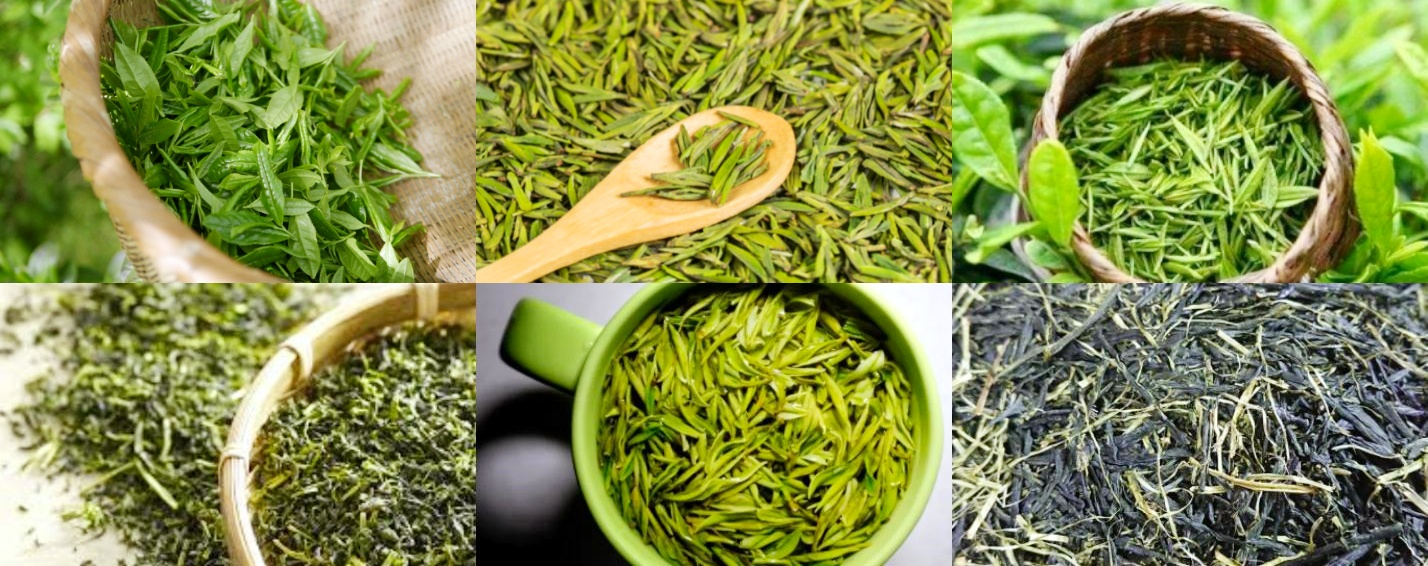
For strip green tea, it is generally recommended to use a sieve between 8 and 20 mesh, which can effectively screen out coarse tea stems and unformed tea lumps, while retaining the green tea finished product with intact strips. If the goal is to finely grade medium-grained green tea, you can choose a sieve between 20 and 40 mesh, which helps to achieve a uniform distribution between different grades.
When removing fine tea leaves or screening tea dust, it is recommended to use a sieve between 40 and 60 mesh, which can effectively separate the dust and tea powder and prevent it from entering high-grade tea products. For tea dust recovery or tea powder grading under specific needs, such as for tea bags or deep-processed tea products, a sieve of 60 to 100 mesh or even above 120 mesh can be further used to screen out ultra-fine tea powder.
Common model parameters of centrifugal sifter for green tea sieving
|
Model |
sieve cylinder diameter (mm) |
motor power (kW) |
sieve mesh number |
processing capacity (kg/h) |
|
LXS-500 |
500 |
1.5 |
20–80 mesh |
200–500 |
|
LXS-800 |
800 |
2.2 |
20–100 mesh |
500–1000 |
|
LXS-1000 |
1000 |
3.0 |
20–120 mesh |
800–1500 |
Application examples of green tea screening centrifugal sieve
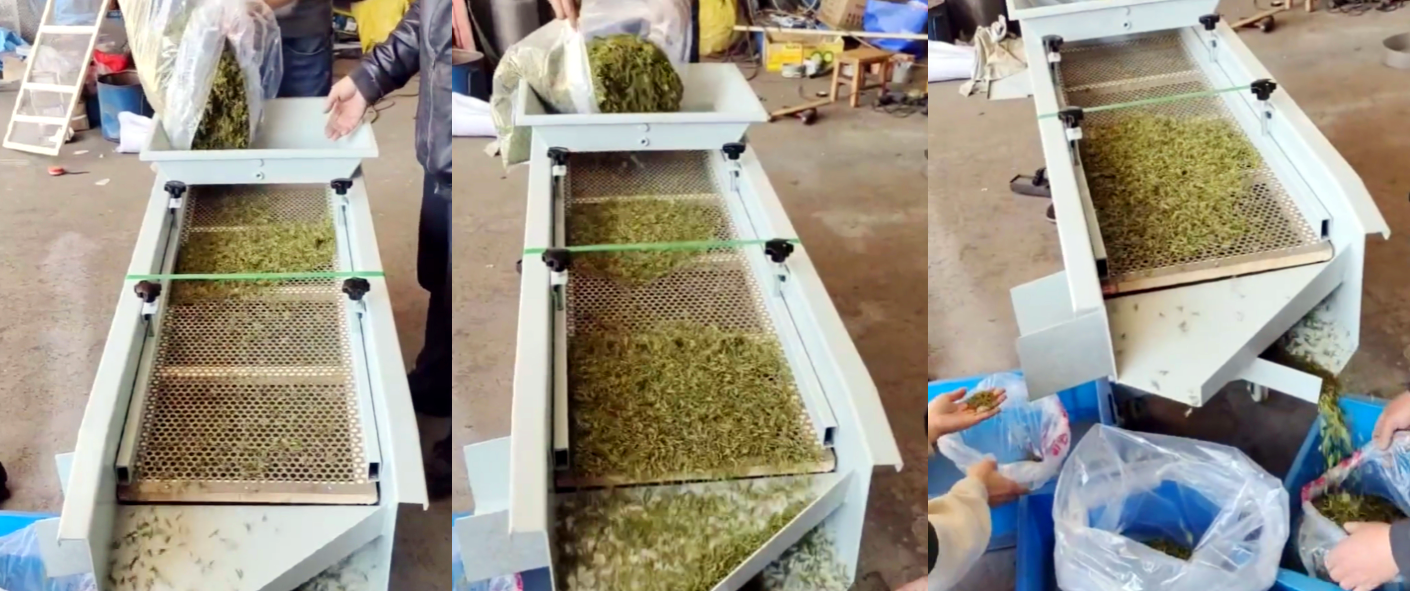
Longjing tea processing: In the Longjing tea refining factory in Hangzhou, Zhejiang, centrifugal sieves are used to sort single buds and one bud and one leaf. The mesh number is set to 20-30 mesh to separate high-grade tea and secondary tea, while removing tea dust and stems. Studies have shown that the optimized screening process can reduce the bitterness index by about 15%, significantly improving the sensory score.
Biluochun refining: A tea factory in Suzhou uses three-layer centrifugal screens (10 mesh, 30 mesh, 50 mesh) to achieve coarse screening, medium screening and fine screening, separate different grades of Biluochun, and remove scorched tea to enhance the market competitiveness of products.
Large-scale green tea production: In a large tea company in Huangshan, Anhui, centrifugal screens are combined with automated production lines to process 500-1000 kg of tea per hour, with grading efficiency increased by more than 30% and labor costs reduced by about 40%.
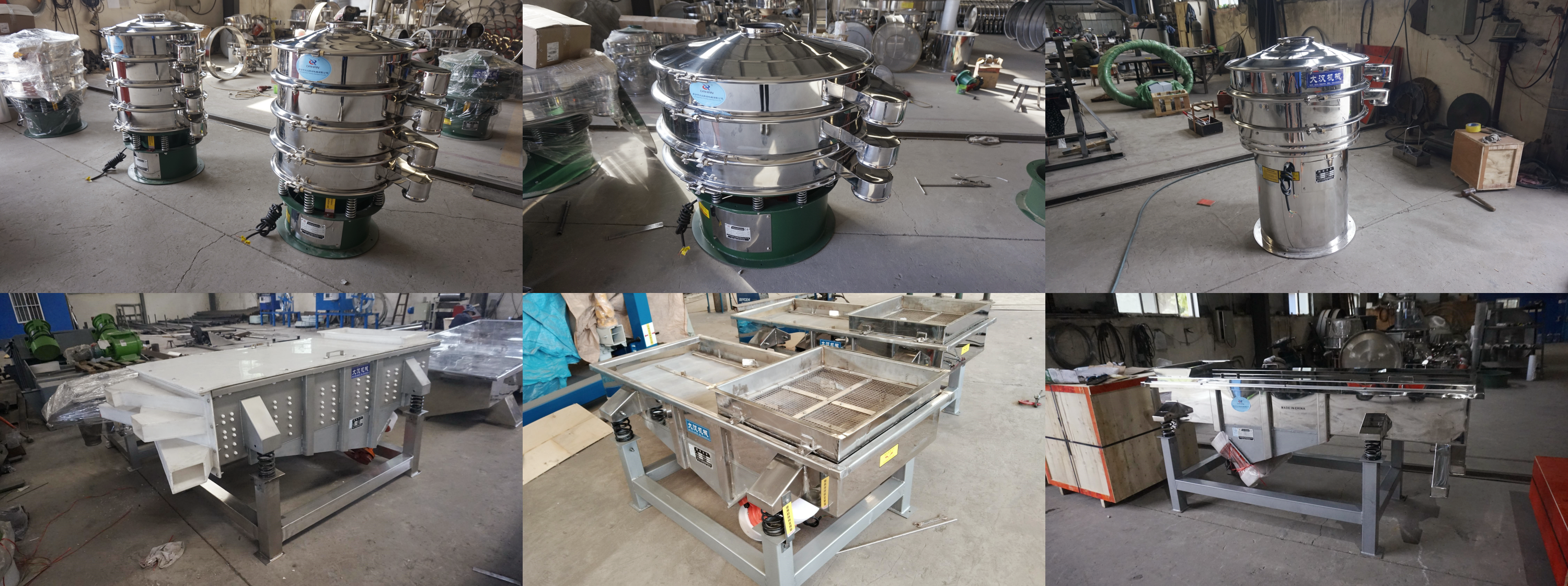
Centrifugal sifter for green tea sieving combines the multiple characteristics of fineness and gentleness, which not only improves the quality and efficiency of green tea screening, but also better adapts to the requirements of automation and refinement for modern tea processing. For companies pursuing high-quality tea grading, centrifugal screens are a professional screening equipment worth adopting.
-
Granules, powders, and paddle materials can be used.
-
Designed for precise grading, peeling or grading of wet and dry applications
-
Quick Release Clamp for Vibratory Screener
Small size, does not occupy space, easy to move.
-
Quickly separate the impurities in the tea, grading tea of different size & shapes.
-
Why use gas protection ultrasonic sieving machine metal powder?
Metal powder refers to a group of metal particles with a size of less than 1mm, including single...
-
What is the price of emulsion filtration shaker?
Emulsion filtration shaker is a screening equipment used in the emulsion industry, mainly used for...
-
River sand linear vibrating screen
River sand linear vibrating screen is a commonly used screening equipment, which is used to...
-
Vibrating screen for gypsum processing
The vibrating screen for gypsum processing is a screening equipment used for particle size grading, impurity removal or dehydration of gypsum...
-
Commercial Flour Sifter for Safety Sieving Flour
Commercial flour sifter for safety sieving flour refers to the process of using professional flour sieving equipment in an industrial pro...
-
Application of Apatite Vibrating Screen
Apatite vibrating screen is used for screening apatite, mainly because apatite materials have the characteristics of uneven particle size...

Email:
sale@xxdahan.com
WhatsApp:
+86 15236742901
Add:
1000m West of Forest Park,Yanjin County,Xinxiang City,Henan Procince,China.

